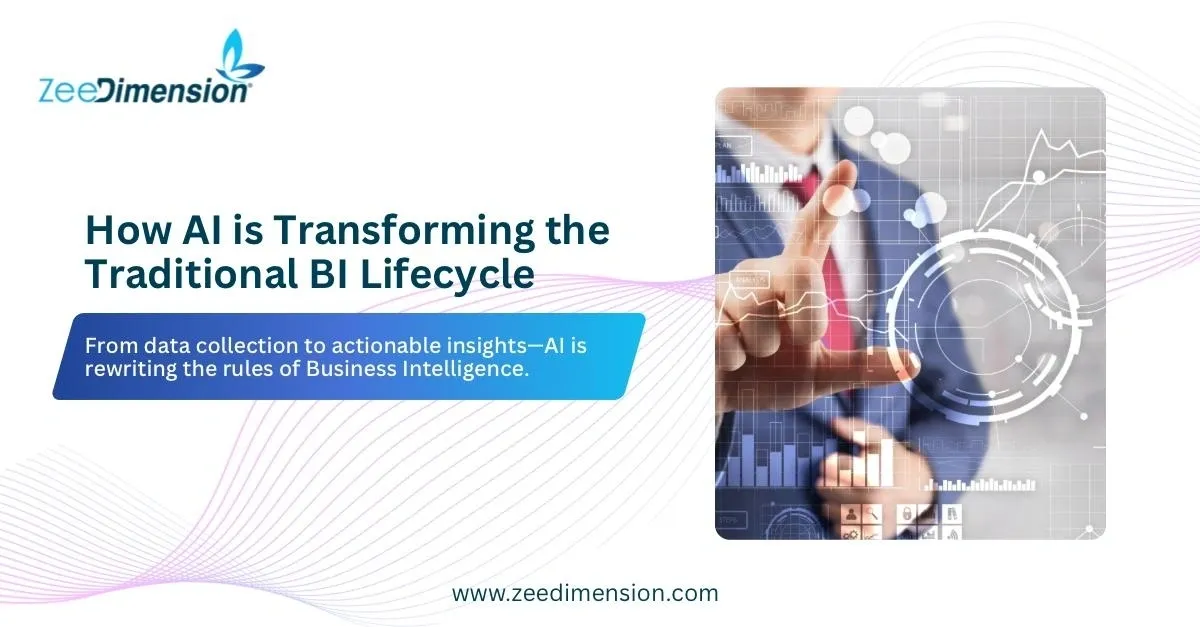
From gathering raw data to turning it into smart decisions—AI is completely changing how Business Intelligence works.
Traditional BI vs. AI-Driven BI
Traditional business intelligence often relies on manual data prep, siloed dashboards, and backward-looking reports. It’s slow, static, and struggles to keep up with today’s data demands. AI-driven BI flips the script—automating workflows, generating real-time insights, and delivering predictive analytics that help businesses make smarter decisions, faster.
Stage 1 — Data Collection & Integration
Back then, collecting data meant a lot of copy-pasting between spreadsheets, databases, and CRMs. It was clunky, slow, and easy to mess up. These days, AI tools handle it all—grabbing information from both structured and messy sources, even from emails or sensors. GE Aviation, for instance, uses AI to pull engine data automatically, saving teams hours of prep.
Stage 2 — Data Cleaning & Preparation
Cleaning data used to take forever—and even then, it was easy to miss errors or make new ones. With AI, that tedious work gets done in a fraction of the time. It spots anomalies, predicts what’s missing, and even suggests how to fix it. IBM Watson Studio, for example, can turn messy datasets into clean, usable info in just minutes.
Stage 3 — Data Analysis & Modeling
Before AI, analysis was limited to whatever questions analysts thought to ask. Everything ran on static queries, and deeper insights often slipped through the cracks. AI changes that by spotting patterns, predicting outcomes, and uncovering trends no one saw coming. Netflix leans on this to understand viewer behavior, personalize recommendations, and keep subscribers hooked.
Stage 4 — Visualization & Dashboards
Dashboards used to be super basic—manual updates, static charts, and honestly, not much to get excited about. AI changes all that. Now everything’s dynamic, always pulling in fresh data in real time. Power BI and Qlik Sense take it a step further: just ask, “What were our top products in Q1?” and boom, AI spits out the answer with visuals that explain everything for you.
Stage 5 — Actionable Insights
There was a time when reports just sat around waiting for someone to interpret them—usually after the moment to act had passed. AI changes the pace completely. Instead of just looking backward, it reads what’s ahead and even offers smart suggestions to take the right steps. UPS, for example, uses AI in its ORION system to figure out the most efficient delivery routes—saving time, fuel, and a whole lot of hassle.
Key Benefits of AI in BI
– Speed: Faster time-to-insight
– Accuracy: Reduced human error
– Scalability: Handles big data with ease
– Proactiveness: From hindsight to foresight
What’s Next?
The future of BI isn’t just about prettier charts—it’s about making data work with you. We’re talking dashboards you can talk to, machine learning tools that don’t need a data science degree, and a workflow where humans and AI actually collaborate, not compete.
Final Thought
AI isn’t just making BI better—it’s flipping the whole thing on its head.
The faster companies get on board, the better shot they have at staying ahead.







